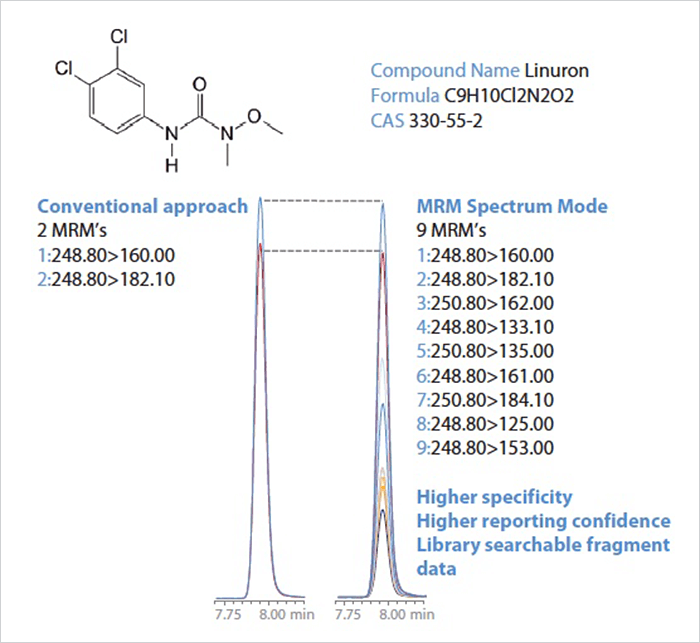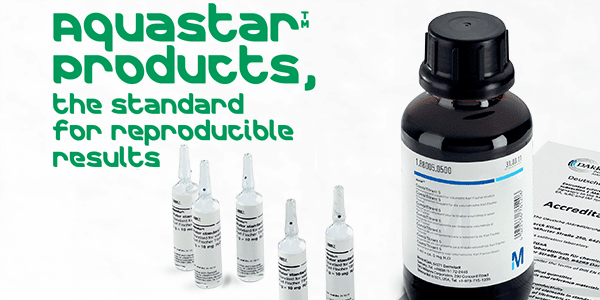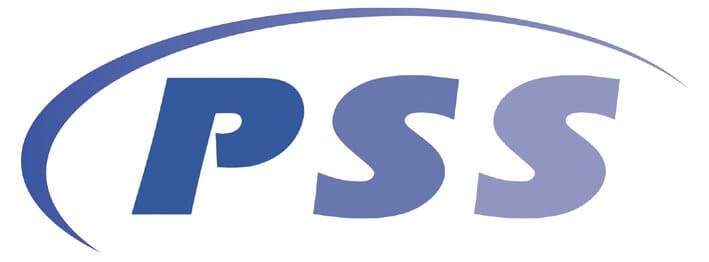Abstract
To help reduce the incidence of false positive and false negative reporting in pesticide residue monitoring routine multiple-reaction monitoring (MRM) methods have been enhanced to monitor a higher number of fragment ion transitions to increase specificity and reporting confidence. In this workflow, typically 6-10 fragment ion transitions were monitored for each target pesticide as opposed to a conventional approach using 2-3 fragment ions. By acquiring a high number of fragment ion transitions, each target pesticide had a corresponding fragmentation spectra which could be used in routine library searching and compound verification using reference library match scores. This ‘MRM Spectrum Mode’ was applied to quantify and identify 193 pesticides using 1,291 MRM transitions without compromising limits of detection, linearity or repeatability.

 Figure 1: Using a higher number of fragment ions in MRM data acquisition increases the specificity of detection and reduces false negative and false positive reporting. In the case of linuron, 9 precursor-fragment ion transitions were used to increase confidence in assay specificity. There is no compromise in data quality between methods despite a higher number of fragment ions monitored. Signal intensity, linearity, reproducibility are in good agreement between both methods.
Figure 1: Using a higher number of fragment ions in MRM data acquisition increases the specificity of detection and reduces false negative and false positive reporting. In the case of linuron, 9 precursor-fragment ion transitions were used to increase confidence in assay specificity. There is no compromise in data quality between methods despite a higher number of fragment ions monitored. Signal intensity, linearity, reproducibility are in good agreement between both methods.Introduction
Multiple Reaction Monitoring (MRM) based LC-MS/MS techniques are widely used on triple quadrupole platforms for targeted quantitation as a result of high selectivity, sensitivity and robustness. In a regulated environment such as food safety there is a growing need to enhance the capability in routine monitoring programs by increasing the number of pesticides measured in a single analysis and at the same time delivering the highest confidence in compound identification to reduce false detect reporting. For pesticide analysis in the EU, identification criteria in SANTE/11945/2015 requires the retention time and the ion ratio from at least 2 MRM transitions to be within acceptable tolerance limits.*1 However, even applying this criteria it is well reported that false positives can occur in certain pesticide/commodity combinations.*2-*4





